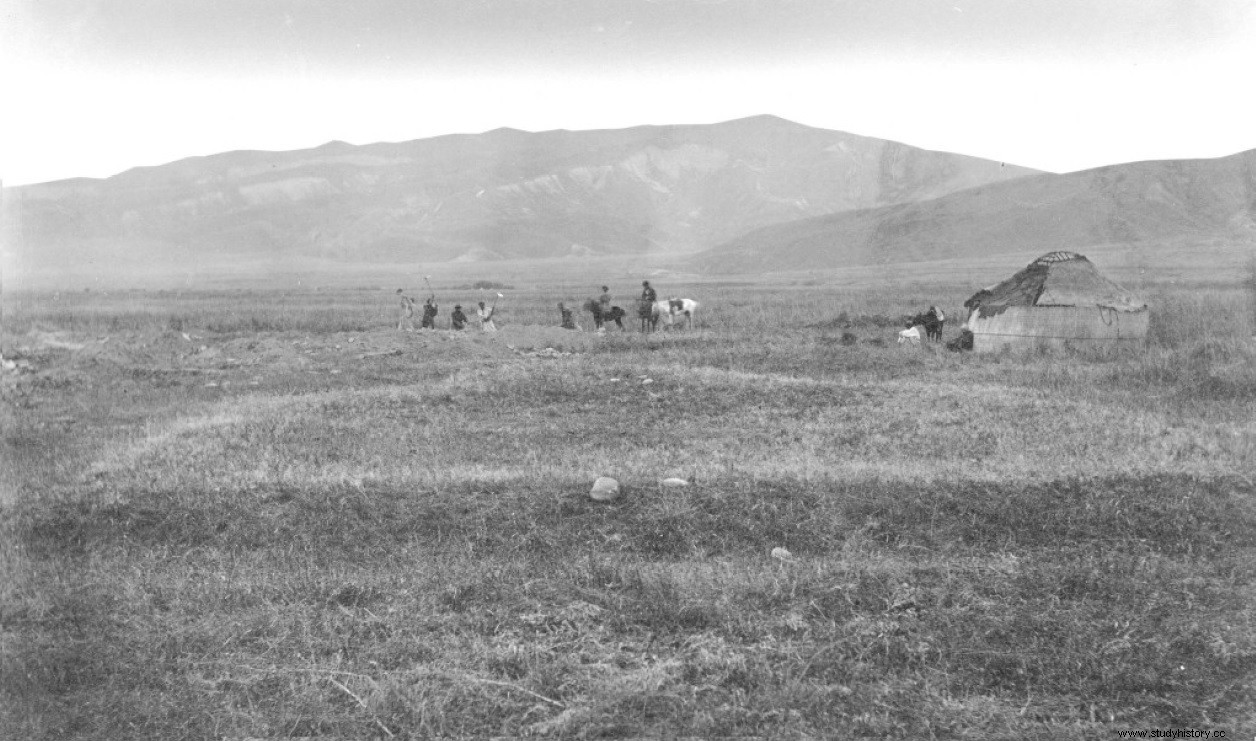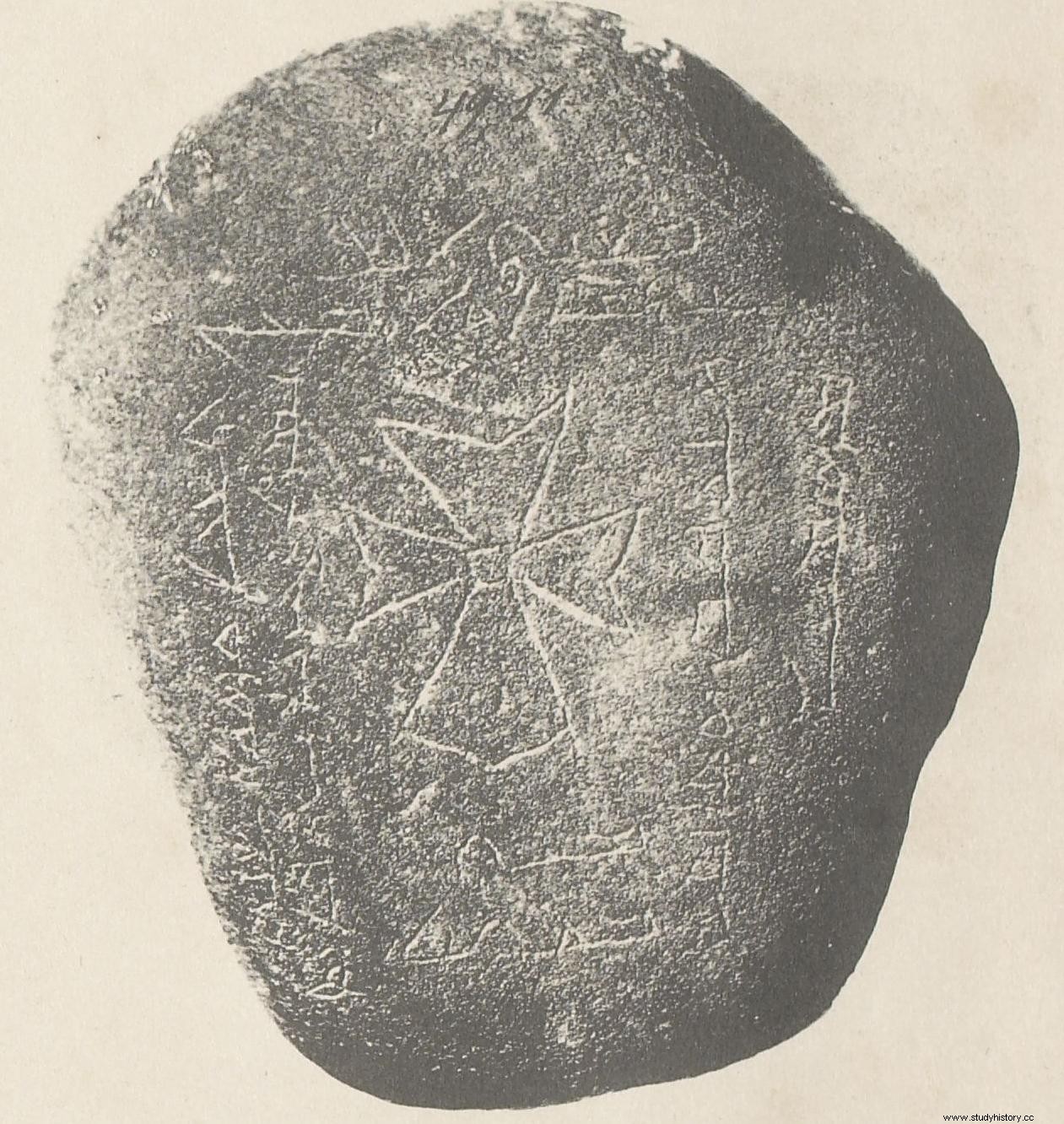In the heart of present-day Kyrgyzstan, Central Asia, engraved teeth and tombstones tell the story of the emergence of the bacterium Yersinia pestis , eight years before it decimated half of Europe.

Tian-Shan Mountains in Kyrgyzstan, nowadays.
It is a mystery dating back more than six centuries that a scientific collaboration has just solved, in work published in Nature . DNA analysis of teeth found in ancient graves does not lie:the Black Death, the greatest pandemic in our history, originated near a Central Asian lake in what is now Kyrgyzstan.
(Too) many tombs mentioning "pestilence" in Central Asia
“We have found the source bacterial strain of the Black Death and we even know the exact date:the year 1338 “, says Maria Spyrou, lead author of the study and researcher at the German University of Tübingen (Tubingen in French), in a press release. At that time there were two Christian communities in the north of present-day Kyrgyzstan, in the region of the Tian Shan. In 1892 - more than five centuries later - it was there, in the heart of the Choui valley where the tall green and red grass hides the foot of the mountainous reliefs, that archaeologists unearthed some thirty On the tombstones, inscriptions in Syriac – an ancient oriental language – attest to a “disproportionate number of burials dating from 1338 and 1339 ” mentioning a “pestilence ”, report the researchers today. But at the time, this word could refer to all kinds of epidemics. How to be sure it was the work of the bacterium Yersinia pestis , who eight years later would kill half the population of Europe, the Middle East and North Africa?
 Excavations at the KaraDjigash site in Kyrgyzstan's Chu Valley in the foothills of the Tian Mountains Shan. This excavation was carried out between the years 1885 and 1892.
Excavations at the KaraDjigash site in Kyrgyzstan's Chu Valley in the foothills of the Tian Mountains Shan. This excavation was carried out between the years 1885 and 1892.
Credit:A.S. Leybin, August 1886
Black Death Bacteria Identified
It is on the remains found in their graves that the researchers are looking. “Our team found DNA matching Y. pestis in the teeth of three of the seven individuals from these communities ”, explains to Sciences et Avenir Philip Slavin, one of the lead authors of the study and a historian at the University of Sterling (UK). Teeth tend to "be better preserved after death and preserve pathogens in the bloodstream" , he adds. By combining these DNA traces, paleogenomics researchers manage to obtain sufficient quality to conclude. "We have finally been able to show that the epidemic mentioned on the tombstones was indeed caused by the plague ", says Philip Slavin.
The direct ancestor of the bacteria that caused the Black Death
According to the DNA found, the bacterium that caused the "pestilences" of these ancient Kyrgyz was in fact not the same, but a direct ancestor of the one that crossed at the time the Mediterranean. “Analysis revealed that the genomes of bacteria 1338-1339 lie on a node IMMEDIATELY preceding the ‘Big Bang’ ”, reveals Philip Slavin. This “Big Bang” is the name given to the birth of four distinct bacterial strains from the initial strain of Yersinia Pestis, the one that caused the "pestilence ” of the ancient communities of the Chuy Valley in the 14th century.

The tombstone of Sanmaq, one of the victims of the plague. The epitaph on his gravestone, written in Syriac, reads:"In the year 1649 [=1337-8], and it was the year of the Tigris, in Turkish (language) "Bars". This is the grave of the believer Sanmaq. [He] died of the plague [=mawtānā]". Credit:A.S. Leybin, August 1886
The marmots in question
It most likely appeared in this same region of the Tian Shan, says the researcher, relying on ancestors of this strain who have also been found there. At the time, it was not the rats that were suspected of having carried the disease, as was the case in Europe. “Plague is not a human disease:its bacteria thrive primarily in sylvatic rodents (of forests, editor’s note)”, specifies Philip Slavin. The main suspects are therefore the populations of marmots, which are very widespread in this region. Then, environmental factors “such as natural disasters and sudden changes in temperature and precipitation ”, could have caused transmission to humans, suggest the authors.
The worst pandemic in history
The rest of the story remains to be understood. Only one of the four “Big Bang” branches of Yersinia pestis traveled to Western Eurasia to cause, eight years after the Tian Shan epidemic, the appalling pandemic that we know. But by what means? At present, it is impossible to know. However, “previous research has suggested that wars or trade networks were major contributors to the spread of Y. pestis ”, advance the researchers in the publication. The rest, we know it better. Between 1346 and 1358, the Black Death crossed the Mediterranean and swept over Europe. A wave that marks the beginning of the most catastrophic pandemic in history. It will last 500 years, until the beginning of the 19th century, and will kill 50% of the European population.
